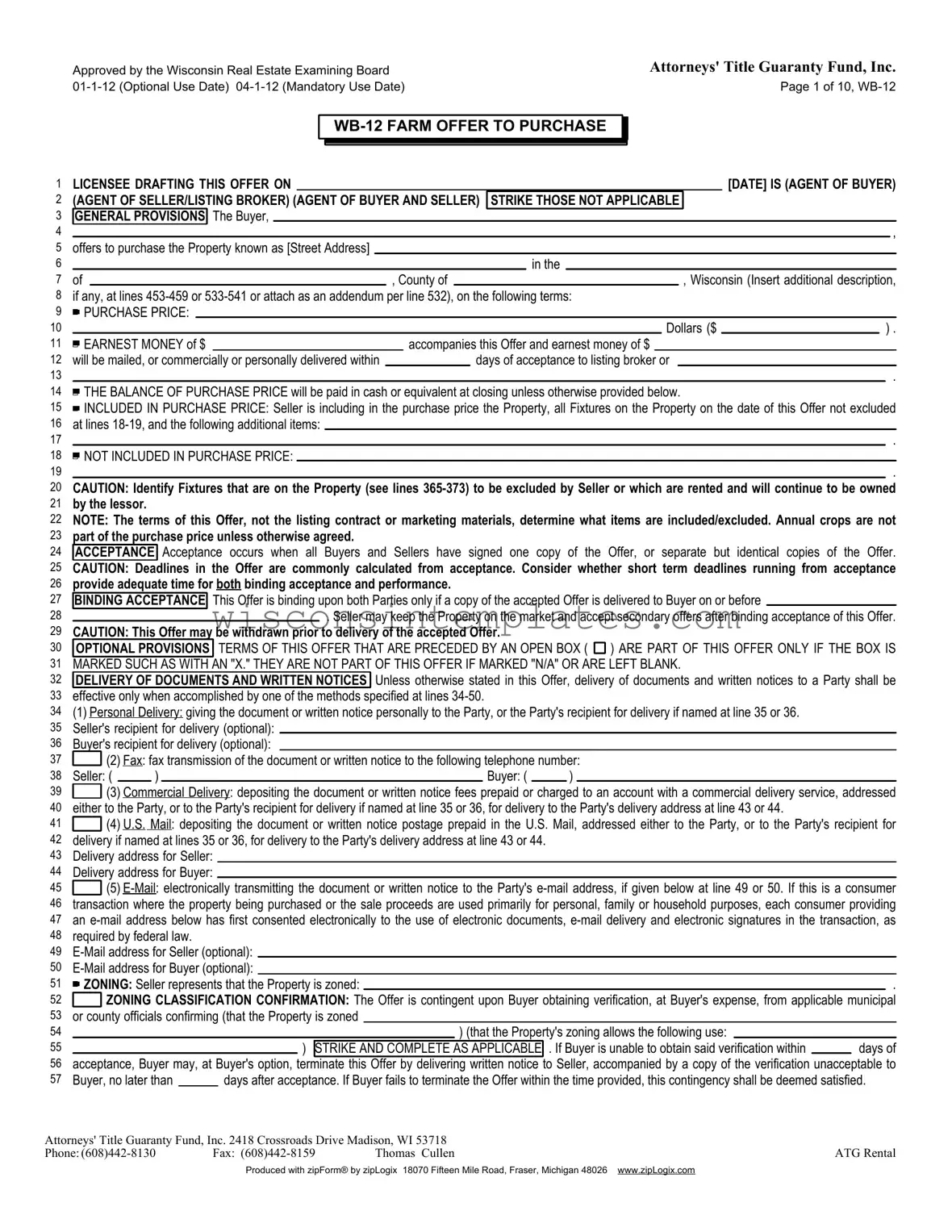The Wisconsin Offer form, commonly referred to as the WB-12, serves as a critical document in real estate transactions within the state. Designed for the purchase of farm properties, this form outlines the essential terms and conditions agreed upon by the buyer and seller. Key elements of the form include the purchase price, earnest money requirements, and provisions regarding the balance of the purchase price, which is typically due in cash at closing. Buyers must be aware of what is included in the purchase price, such as fixtures and additional items, as well as any exclusions. The form also details the acceptance process, establishing that the offer becomes binding only when all parties have signed and a copy is delivered to the buyer. Additionally, it addresses contingencies that may affect the transaction, including zoning verification, property inspections, and environmental assessments. Each of these aspects is vital for ensuring that both parties understand their rights and obligations, ultimately facilitating a smoother transaction process. Understanding the nuances of the Wisconsin Offer form can significantly impact the success of a real estate deal, making it essential for buyers and sellers to engage with this document thoughtfully.
